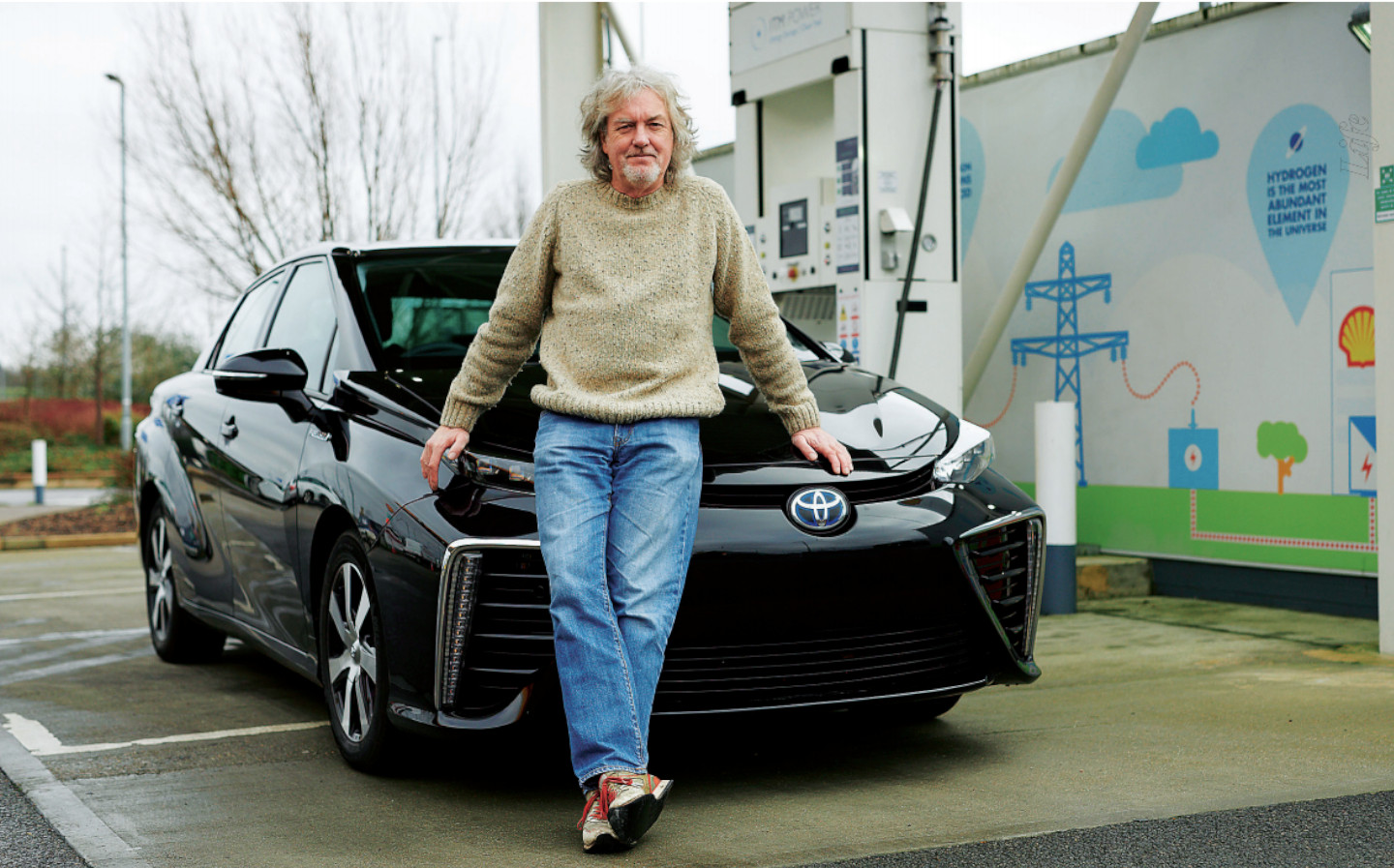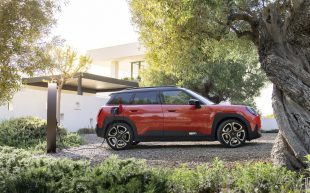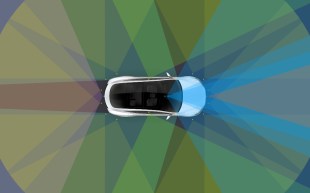James May has written the best battery vs hydrogen electric car summary we've read
He owns both types and still believes we need hydrogen fuel cells
THE GRAND Tour host James May has written about his love of hydrogen fuel cell electric vehicles (FCEVs) in a piece for the Sunday Times Magazine, summarising superbly the advantages and disadvantages of them versus battery-electric vehicles from the likes of Tesla. As an owner of both types of electric car (and they are both electric, as the wheels are turned by electric motors), he should know.
The 58-year old — now sporting a lockdown goatee, incidentally — is one of fewer than 200 Toyota Mirai owners in the UK. The Mirai, launched in 2014, is Toyota’s FCEV, and one of only two hydrogen-powered cars currently offered in the UK (the other is the Hyundai Nexo).
May’s article in The Sunday Times is ostensibly a review of the Mirai, a new version of which is due for imminent release, though actually it’s an article that argues for the continued investment in hydrogen fuel cell technology — not just for cars but for factories, homes and all our power needs.
In many respects, the Mirai is a typical Toyota saloon and not terribly exciting, May begins. It produces 152bhp, is well-built — in the manner one would expect from Toyota — is sufficiently insulated from wind noise and has a pleasantly smooth ride. He even likes its looks, which he thinks represent its progressive nature.
The TV star goes as far as to say that it might be “the nicest car [he has] ever owned”. Now in a more mature period of his life, he tends to view exuberant Italian V8s as an occasional treat rather than something for everyday use.
“In normal use there’s something deeply satisfying about a car so civilised and silent in operation that I can fully appreciate the noise I now make when I get in,” he says.
However, May admits that what excited him most about the car is what it represents, rather than the car itself. Hydrogen is often seen to many (especially the “Teslerati” — devout worshippers at the church of Elon Musk, who calls them “fool cell” cars) as inferior to battery-electric power.
May can understand why, he says: while charging a battery-electric car means plugging in, either at a public charging station or at home, they can make use of an existing, extensive refuelling infrastructure — the national grid. To refuel a hydrogen car today, it requires the driver to find a hydrogen refuelling station, of which there are only 12 in the UK — and half of those are in the south-east.
What’s more a tank of hydrogen that’s good for around 300 miles costs approximately £60, he says, which is a lot more expensive than 300 miles in a battery electric car. And most commercial hydrogen available at the moment is made by reforming fossil fuels, such as gas, which is not exactly great for the environment.
Furthermore, while people occasionally undertake long journeys, most do not touch the full capability of their battery on a daily basis, he points out.
Battery-electrics are also efficient, with between 70% and 80% of the energy that leaves the power station making it to the car’s battery. That figure plummets to 35%-40% for hydrogen, thanks to the energy needed to extract and compress it.
Hydrogen, and the fuel cell that converts it into energy, are also extremely expensive to produce: the Mirai costs £66,000, and as he says, it’s not terribly quick or exciting.
However, May is all too aware of the disadvantages of battery electric cars. Major advances in battery technology will be slow, he says, while their heft (lithium ion battery packs are heavy) means that they are “useless in shipping freight or aviation”.
Meanwhile, even with Tesla’s superchargers, the time difference between refilling a tank of hydrogen and recharging a battery is difficult to ignore. And while most journeys are well within the capability of a single charge, some are simply not.
And May highlights concerns about the provenance of some of the raw materials used in battery manufacture, such as cobalt and nickel.
As progress is made, hydrogen could pose a solution to all of these issues, argues May. It’s suitable not just for aviation and freight but also the factories that build electric vehicles, and hydrogen will one day be “cracked” from water by electrolysis, using almost unlimited renewable energy, “in which case efficiency is not such an issue” and becomes a storable and transportable fuel.
“Hydrogen could also replace the gas used in the existing national network, which is three times bigger than the electricity grid,” he says.
May is not alone in his belief: just three days ago the charity Climate Action held the 2021 Hydrogen Transition Summit, which was attended by car makers including Hyundai. The South Korean car company has already shown itself to be a serious player in the hydrogen landscape: it delivered ten units of the first hydrogen-powered lorry to Europe last year, and is working with British SUV maker Ineos on improving Europe’s hydrogen infrastructure.
Concluding, May wrote that he believes hydrogen is a big-picture solution to the world’s renewable energy problem, while batteries only solve the issues with cars: “[Hydrogen] is not a very good solution to decarbonising the car. Battery cars are much better for that. Rather, the fuel-cell car is merely the car element of a much bigger energy vision to decarbonise everything. For that reason I think it’s worth pursuing.”
You can read James May’s full piece about hydrogen (and a bit about his Toyota Mirai) on The Sunday Times website, or in today’s Sunday Times Magazine.
Tweet to @ST_Driving Follow @ST_Driving
- After reading about James May’s battery vs hydrogen electric car summary, take a look at our interview with Hyundai’s hydrogen chief in which they called battery-electric cars a “quick fix” but said hydrogen must be part of the long term.
- You might be interested in reading about James May’s review of the Ferrari F8
- James May also believes that the government should spend the money set aside for HS2 on bicycles.
- During lockdown, May created an app designed to help out learner drivers with their theory tests… and he told Driving.co.uk which questions he finds hardest.





